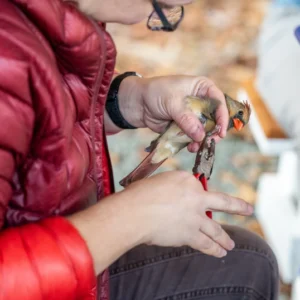Ranchers and naturalists see eye to eye on grasslands conservation
By Stephen Hazell, Nature Canada’s Interim Executive Director
Early April in the grasslands of southern Alberta and southwestern Saskatchewan and spring had barely sprung. Still, many migratory species were on the move, including pintail ducks, snow geese, trumpeter swans, rough-legged and ferruginous hawks, and golden and bald eagles.
I was on a 2500 km tour through these grasslands with Cliff Wallis, Nature Canada’s vice-president, Ian Davidson, Nature Canada’s former executive director, and U.S. foundation representatives to talk with ranchers, local conservationists, and federal and provincial officials about protecting native grasslands and ranching communities.
Our visit was important for several reasons. The federal government is turning over the management of one million hectares of community pasture to prairie province governments without legal guarantees that wild grasslands and the numerous species at risk they support will be protected. We wanted to explore how the most ecologically important of these community pastures could be protected from monoculture agriculture and industrial development. Second, we wanted to talk to the ranchers about how to continue to manage these formerly federal community pastures grasslands to support local economic and social sustainability as well. Third, we also wanted to discuss with ranchers their concerns about the implementation of the emergency order to protect the highly endangered greater sage-grouse.
We had a series of excellent meetings with ranchers, federal and provincial officials, and local NGOs in Medicine Hat, Lethbridge, Milk River Ridge and Manyberries Alberta, and Consul, Shaunavon, and Old Man on his Back Saskatchewan. The upshot? Ranchers and conservationists share many common values including conservation of wild grasslands, and the belief that well-managed grazing actually benefits grasslands biodiversity. But ways and means to conserve nature cannot prejudice the already challenged economics facing most ranching operations. At a minimum, the rough edges of the Emergency Order need to be smoothed out. Federal and protected areas such as National Wildlife Areasor Alberta Heritage Rangelands make sense for some grasslands. Finally, ranchers and the nature community need to get together to convince the federal government that it has a continuing financial responsibility to support the transition in management of the formerly federal community pastures to ensure nature conservation and sustainability of ranching communities.
I see a strange (at least to governments) bedfellow alliance emerging between ranchers and the nature community. And that would only be good news for wild grasslands.



